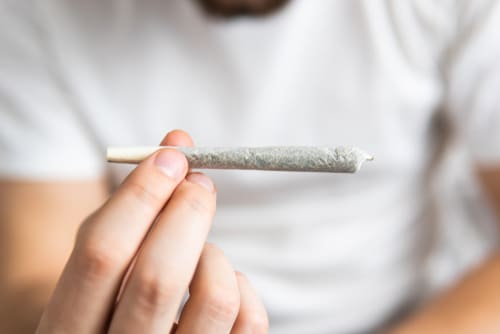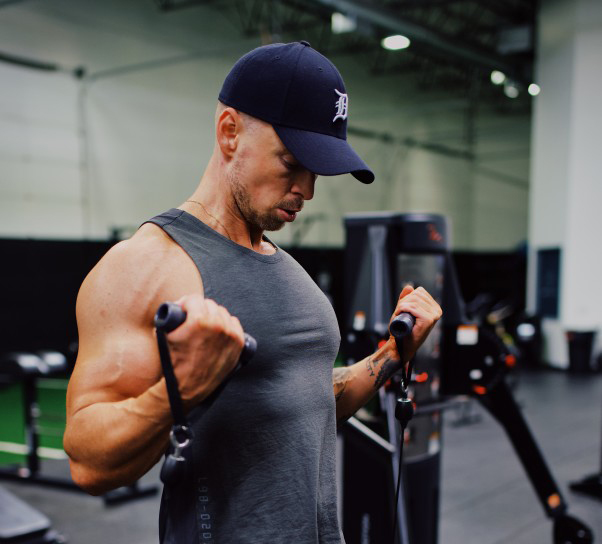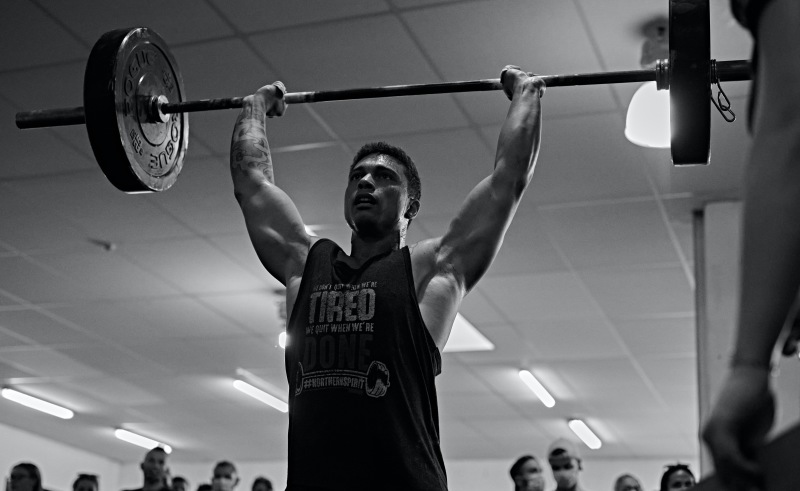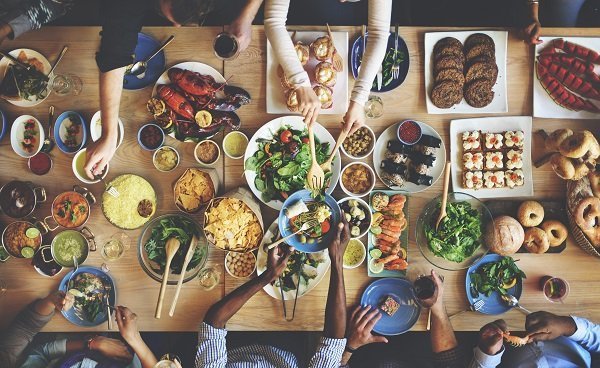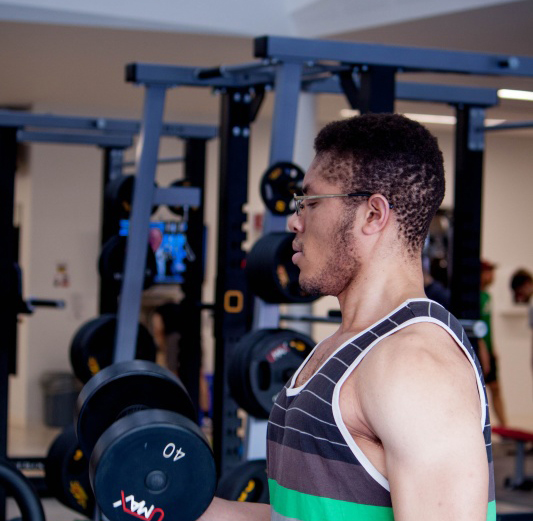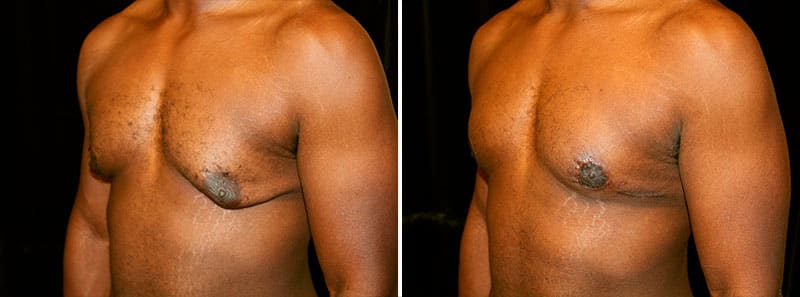
Complete Guide To Gynecomastia (Enlarged Male Breasts) In Singapore
We all think that when it comes to breasts, they’re a concern pertaining only to the fairer gender. However, men do have breasts – even milk ducts.
With high testosterone levels produced puberty, for the vast majority of men, the breast tissue does not develop like it does for their female counterpart.
There are 2 types of conditions that affect men in Singapore.
The first is gynecomastia, which is a medical condition – men with such condition have more prominent glandular tissue present, often as a result of hormonal imbalance. When it comes to man boobs for the majority of men, they are usually a mixture of both fat and breast tissue enlargement.
The second condition is pseudogynecomastia, which is the accumulation of excess fat tissues on the chest.
Gynecomastia: Enlarged Male Breasts
For gynecomastia, the cause of the condition is an excess of glandular male breast tissue due to hormone imbalance.
Unlike fat tissue, glandular tissue is firmer and more fibrous, and it also does not respond to diet changes nor exercise.
Gynecomastia Symptoms: Soft Lumps & Tenderness
Feel for soft lumps in your breasts. In true gynecomastia, glandular breast tissue may develop in one or both breasts.
This tissue may be located directly behind the nipple. To check for the symptom, gently feel your breast with your fingertips.
Should you suffer from gynecomastia, you should feel a soft, rubbery lump in one or both breasts.
Gynecomastia may occur in just one breast or both breasts at a go. And with the size of the lump varying, it may not be the same in both breasts.
Breast buds which signal the start of puberty, are typically the size of a nickel or quarter in puberty-aged boys.
Take note of tenderness. Gynecomastia may cause your breasts to be tender and sore, especially when you touch or press on them.
If your breasts are causing you a significant amount of pain or discomfort, it is advisable to make an appointment with your doctor right away.
Causes of Gynecomastia: Natural Hormone Changes, Puberty & Health Conditions
An imbalance of hormones triggers gynecomastia. A decrease in the amount of the testosterone level compared with estrogen leads to the condition.
The decline in testosterone levels can be caused by conditions that block the effects of or reduce testosterone.
It may also be a condition that increases your estrogen level. Several factors can upset the hormone balance, and these include the following:
Natural hormone changes
The hormones testosterone and estrogen not only control the development but it is a maintenance of sex characteristics in both men and women.
Testosterone takes control of male traits, such as muscle mass and body hair, while Estrogen takes control of female traits, including the growth of breasts.
Most people associate estrogen as an exclusively female hormone, but the truth is, men also produce it — though generally in small quantities.
However, when male estrogen levels are too high or are out of balance with testosterone levels, this can cause the condition, gynecomastia.
Gynecomastia during puberty
Enlarged male breasts are caused by hormone changes during puberty is relatively common.
In most cases in Singapore, the swollen breast tissue will go away without treatment within six months to two years.
As for Gynecomastia in men, the prevalence of this condition peaks again between the ages of 50 and 69 with at least 1 in 4 men in this age group being affected.
Health conditions
Several health conditions can cause gynecomastia by tilting the normal balance of hormones. These include:
- Any of the conditions that interfere with normal testosterone production, such as Klinefelter’s syndrome or pituitary insufficiency, can be associated with gynecomastia.
- Hormone changes that occur during the normal course of ageing can cause gynecomastia, especially in overweight men.
- Some tumours, such as those involving the testes, adrenal glands or pituitary gland, can produce hormones that alter the male-female hormone balance.
In this condition, the thyroid gland produces too much of the hormone thyroxine. - Kidney Failure. About half the people being treated with regular hemodialysis experience gynecomastia due to hormonal changes.
- Liver Failure And Cirrhosis. Hormonal fluctuations related to liver problems as well as medications taken for cirrhosis are associated with gynecomastia.
- Malnutrition And Starvation. When your body is deprived of adequate nutrition, testosterone levels drop, but estrogen levels remain constant. As such, this causes a hormonal imbalance. Unfortunately, Gynecomastia may persist despite resuming normal nutrition.
Common Gynecomastia Questions
Here are some common questions on gynecomastia:
1. Can Beer, Chicken, Eggs And Soya Beans Cause Gynecomastia?
Hoppy beers like IPA (Indian Pale Ale) contain phytoestrogen, a plant-based estrogen hormone. The common myth is that drinking too much of them will cause estrogen levels to skyrocket.
The truth is, the phytoestrogen levels are too low to create any hormone imbalance. The consumption of beers or any alcohol in excess can be detrimental to your overall health and thus, should be avoided.
Soy contains isoflavones, a class of phytoestrogens which may mildly mimic the hormone estrogen. The effects of soy isoflavones on estrogen levels are complex, but in general, soy is safe to be consumed in moderation.
As such, eggs, milk and other food products that contain hormones are safe for consumption when taken in moderation.
2. Can Steroids Eliminate Enlarged Male Breasts?
Anabolic steroids contain a lot of testosterone, which many may consider a solution since the key cause of enlarged male breasts is hormone imbalance where estrogen levels are higher.
Sounds like a solution right? Wrong.
Apart from other potential health issues, steroid use is the primary trigger for gynecomastia.
When you’re on steroids and then go off them, this results in testosterone levels fluctuating, causing an increase in your estrogen level.
This often leads to fat development in the chest area. As such, never self-medicate as this can cause your hormones to go out of whack.
Should you notice signs of gynecomastia, always seek appropriate and qualified doctor advice.
3. Does Andropause/Male Menopause Cause Gynecomastia?
Studies have shown that male menopause or andropause happens in men aged 50 or older when testosterone production drops.
Testosterone fuels changes during puberty and affects a man’s mental and physical energy as well as regulates other key evolutionary features.
As the levels of testosterone drops, it causes a hormonal imbalance and these may eventually lead to the development of enlarged male breasts.
4. Is Gynecomastia An Early Sign Of Breast Cancer?
Breast cancer is not only a concern for women since men can contract it too, albeit rarer in men. Gynecomastia, however, is not a sign of breast cancer.
Furthermore, excessive breast development and breast cancer are not found to be correlated.
When a person slims down, he will tend to see an overall reduction in size.
However, should you be suffering from true gynecomastia, your chest fullness will only look more prominent after other parts of your body have shrunk.
The only way to treat this part of your body is through a surgical intervention with gynecomastia surgery.
5. How To Get Rid Of Gynecomastia
Gynecomastia is a dual component problem as these excessive breasts glands and fat tissues, unfortunately, cannot be eradicated through diet and exercise alone, but with gynecomastia surgery.
6. Gynecomastia Grades On Excess Male Breasts
Enlarged male breasts tissue is divided into four different “grades”, based on the severity of the problem.
Gynecomastia Grade 1: The initial stage is characterised by minor breast enlargement without the development of excess skin. The excess skin, at this stage is found around the areola which is the coloured tissue that is surrounding the nipple.
Gynecomastia Grade 2: As the gynecomastia condition enters into the next stage, there will be a development of moderate breast enlargement without the development of excess skin. However, with enlarged male breast tissue, it now extends beyond the areola, with a minor degree of enlargement. Despite the enlargement, it is still imperceptible when a loose shirt is worn.
Gynecomastia Grade 3: Without treatment, the gynecomastia exacerbates and enters the 3rd stage. At this stage, there will be moderate breast enlargement with the development of excess skin. As the enlarged male breast tissue extends further into the breast zone, the male chest starts to look slightly like the feminine breasts and at this stage, the condition becomes clearly noticeable by others.
Gynecomastia Grade 4: As the gynecomastia enters the final stage, the condition is further aggravated with breast enlargement and excess skin. At this stage of the gynecomastia condition, patients will find that their chest appears similar to that of woman’s breasts. By now, the enlarged male breast tissue has become very noticeable and would be impossible to hide.
7. Will the skin sag after gynecomastia?
Most of the patients have degrees of gynecomastia that are not excessively saggy, as such, in these instances, the skin elasticity will ensure that the skin snaps appropriately into a more aesthetically pleasing position.
It is also important to wear the compression garment as it will help in guiding the skin back to the desired position.
8. Is recurrent gynecomastia common after gynecomastia surgery?
When a gland is removed through the procedure, it is permanently removed and does not recur. The maintenance of post-surgery is also crucial in maintaining post-surgery results, and this includes adopting a healthy lifestyle that includes diet and exercise.


